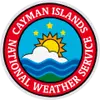

East to northeast at 10 to 15 knots.
Moderate with a wave height of 3 to 5 feet.
An above average activity expected for the 2020 hurricane season
Colorado State University hurricane researchers are predicting an above-average Atlantic hurricane season in 2020, citing the likely absence of El Niño as a primary factor. Tropical and subtropical Atlantic sea surface temperatures are currently warmer than their long-term average values and are consequently also considered a factor favoring an active 2020 Atlantic hurricane season. The tropical Pacific currently has warm neutral ENSO (El Niño-Southern Oscillation) conditions; that is, the waters are slightly warmer than normal in the eastern and central tropical Pacific. CSU currently anticipates that these waters are likely to cool relative to their long-term averages over the next several months. Consequently, they do not anticipate El Niño for the peak of the Atlantic hurricane season. El Niño tends to increase upper-level westerly winds across the Caribbean into the tropical Atlantic, tearing apart hurricanes as they try to form. The tropical Atlantic is somewhat warmer than normal right now. Warmer-than-normal sea surface temperatures in the tropical Atlantic provide more fuel for tropical cyclone formation and intensification. They are also associated with a more unstable atmosphere as well as moister air, both of which favor organized thunderstorm activity that is necessary for hurricane development.
ATLANTIC BASIN SEASONAL HURRICANE FORECAST FOR 2020
| Forecast Parameter and 1981-2010 Average (in parentheses) | Issue Date 2 April 2020 |
| Named Storms (NS) (12.1) | 16 |
| Hurricanes (H) (6.4) | 8 |
| Major Hurricanes (MH) (2.7) | 4 |
By: CSU University Communications Staff
STORM NAME | DATES ACTIVE | STAGE |
Arthur | May 16 - 19 | TS |
Bertha | May 27 - 28 | TS |
Cristobal | Jun 1 - 9 | TS |
Dolly | Jun 22 - 24 | TS |
Edouard | Jul 4 - 6 | TS |
Fay | Jul 9 - 11 | TS |
Gonzalo | Jul 21 - 25 | TS |
Hanna | Jul 23 - 25 | H |
Isaias | Jul 30 - Aug 4 | H |
Ten | Jul 31 - Aug 1 | TD |
Josephine | Aug 11 - 16 | TS |
Kyle | Aug 14 - 15 | TS |
Laura | Aug 20 - 29 | MH |
Marco | Aug 21 - 25 | H |
Nana | Sep 1 - 3 | H |
Omar | Aug 31 - Sep 5 | TS |
Paulette | Sep 7 - 22 | H |
Rene | Sep 7 - 14 | TS |
Sally | Sep 11 - 17 | H |
Teddy | Sep 12 - 23 | MH |
Vicky | Sep 14 - 17 | TS |
Wilfred | Sep 17 - 21 | TS |
Alpha | Sep 17 - 19 | TS |
Beta | Sep 17 - 22 | TS |
Gamma | Oct 2 - 6 | H |
Delta | Oct 4 - 19 | H |
Epsilon | Oct 19 - 26 | H |
Zeta | Oct 24 - 29 | H |
Eta | Oct 31 - Nov 13 | H |
Theta | Nov 10 - 15 | TS |
Iota | Nov 13 - 18 | MH |
The 2020 Atlantic hurricane season was the most active Atlantic hurricane season on record, in terms of number of systems. It featured a total of 31 tropical or subtropical cyclones, with all but one cyclone became a named storm. Of the 30 named storms, 14 developed into hurricanes, and a record-tying seven further intensified into major hurricanes. It was the second and final season to use the Greek letter storm naming system, the first being 2005, the previous record. Of the 30 named storms, 11 of them made landfall in the contiguous United States, breaking the record of nine set in 1916. During the season, 27 tropical storms established a new record for earliest formation date by storm number. This season also featured a record 10 tropical cyclones that underwent rapid intensification, tying it with 1995, as well as tying the record for most Category 4 hurricanes in a singular season in the Atlantic Basin. This unprecedented activity was fueled by a La Niña that developed in the summer months of 2020 as it did, continue a stretch of above-average seasonal activity that began in 2016. Despite the record-high activity, this was the first season since 2015 in which no Category 5 hurricane formed.
The season officially started on June 1 and officially ended on November 30. However, tropical cyclogenesis is possible at any time of the year, as demonstrated by the early formation of Tropical Storms Arthur and Bertha, on May 16 and 27, respectively. This was the sixth consecutive year with a pre-season system and the second of these seasons to have two, with the other being 2016. The first hurricane, Hurricane Hanna, made landfall in Texas on July 25. Hurricane Isaias formed on July 31, and made landfall in The Bahamas and North Carolina in early August, both times as a Category 1 hurricane; Isaias caused $4.8 billion in damage overall. In late August, Laura made landfall in Louisiana as a Category 4 hurricane, becoming the strongest tropical cyclone on record in terms of wind speed to make landfall in the state, alongside the 1856 Last Island hurricane and Ida. Laura caused at least $19 billion in damage and 77 deaths. September was the most active month on record in the Atlantic, with ten named storms. Slow-moving Hurricane Sally impacted the US Gulf Coast, causing severe flooding. The Greek alphabet was used for only the second time, starting on September 17 with Subtropical Storm Alpha, which made landfall in Portugal on the following day.